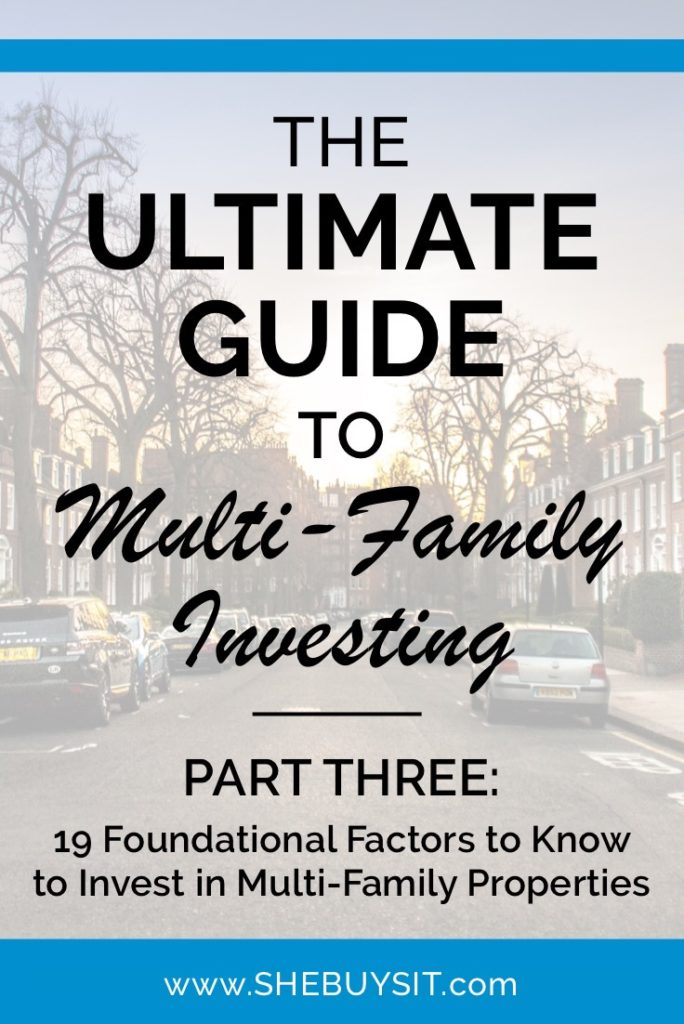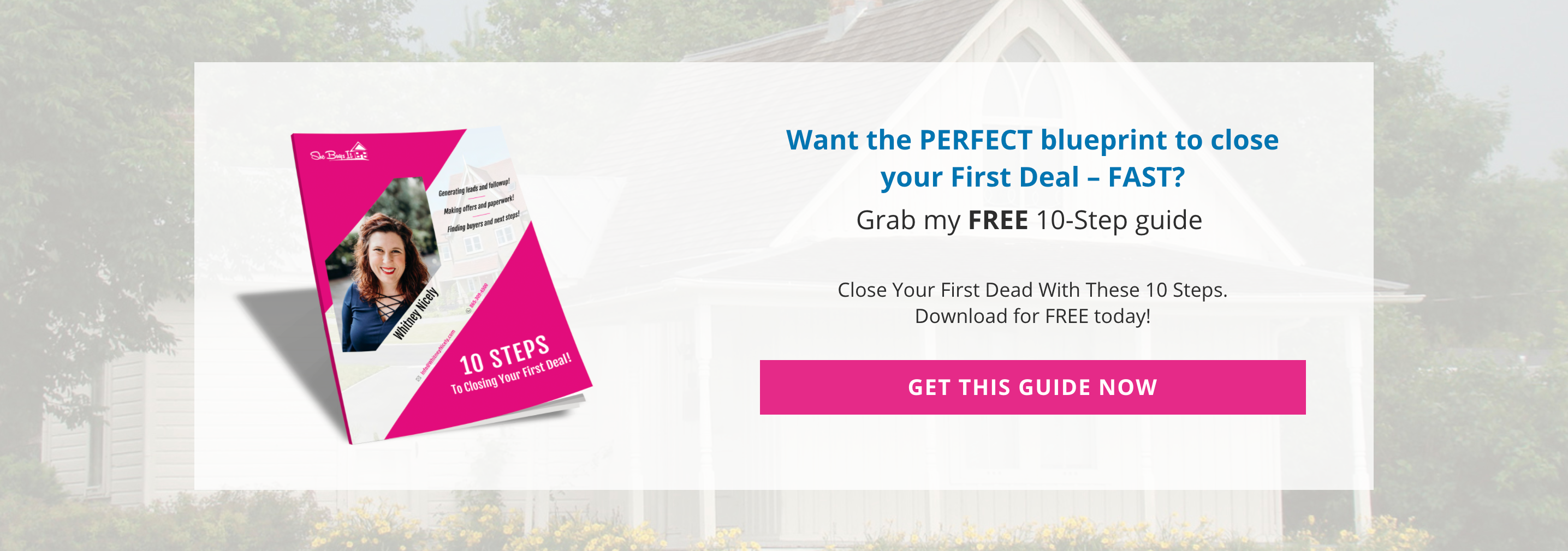 Do you want to invest in multi-family properties? Does the thrill of the income potential excite you to the core? If so, it is time to get informed so you can be a true success as you step into this energizing arena.
Do you want to invest in multi-family properties? Does the thrill of the income potential excite you to the core? If so, it is time to get informed so you can be a true success as you step into this energizing arena.
We are now onto Part Three, the final post of the series on investing in multi-family properties (see posts one and two here). We’ve discussed why multi-family properties are an excellent option for serious investors, and many of the key differences between single family homes and multi-family homes.
Now, we’ll get into the weeds a bit to gently break down some additional information to help you take the next step with confidence.
The Ultimate Guide to Multi-Family Investing: Part Three
19 Foundational Factors to Know to Invest in Multi-Family Properties
Decision-Making Process
- Exit Strategy – Make sure you know your exit strategy for properties, in the case things are not as they seem.
- Capital – What kind of capital do you personally have, or have access to?
- Location – What kinds of multi-family properties are realistically around the area where you wish to invest?
- Education of Process – Important to be educated and informed about how the process works for multi-family properties
- Understanding of the Differences – Yes, they are different, so make sure you have done your homework to understand where, why, and how
Terms
- Gross Potential Income (GPI) is the total income potential of a property with full occupancy and fully paid rent amounts.
- Vacancy Factor is a percentage that shows how often a unit was vacant throughout the year (low vacancy rates mean the property rents well).
- Effective Gross Income is the income a property is expected to produce once expenses and factors for vacancy or collection are removed.
- Operating Expense is the general cost of basic operations for managing a property.
- Net Operating Income (NOI) is the total left of the difference between the amount of income brought in by a property minus the reasonable expenses for maintenance and management.
Ratios
- Capitalization Rate (Cap rate) is a key indicator to show investors how well the property is producing income (the higher the rate, the better the return on investment; rates vary according to your area).
- Debt Service Coverage Ratio is basically the number that tells investors (namely banks) whether or not a property is receiving a sufficient amount of income to pay for it’s expenses each month.
- Break Even Ratio is a calculation used to determine exactly what rate the units needs to be filled in order to provide a sufficient income to meet all expenses.
- Gross Rent Multiplier is a super rough calculation to determine the value of a property by dividing the purchase price of a property by its total annual income. It is a far from perfect calculation, but still one to know.
- Cash on Cash Return calculates the NOI (remember, difference between gross income minus expenses) divided by total amount of cash invested.
Contract Periods
- Single Family Homes are a less complex investment option, so the contract periods last only about 30-60 days. The contract starts as soon as the contract or lease option is signed. Investors get a limited period of time for due diligence, which begins on day one of the signed contract, and lasts about 2-3 weeks.
- Multi-Family Homes have a bit more to consider. The starting point is a Letter of Intent (LOI) given by the intended buyer (you). Typically it takes about 90 or more days to close, and the due diligence period begins once the seller provides all requests documents to the potential buyer.
Finding Leads
- Multi-family properties are a bit more difficult to track down than single family homes. There is not as simple a process to find them, like driving for dollars is for single family homes. Typical ways to find multi-family properties on the market are through For Sale By Owner or Bank Owned signs, seller lists, and simply looking for the rundown properties in disrepair (often a sign of a disgruntled owner or landlord).
Cultural Preferences
- While I know flips and mega-sales are super sexy for TV, the truth is that the slow and steady, race-winning focus to create passive incomes with rental units just is not tv glam. Shows want ratings and profits, but you want to truly make a difference for your future. So, while it might not be sexy enough for tv, it is certainly sexy enough for your goals.
Are You Ready to Jump In to Multi-Family Properties?
At this point I know you see the awesome value in multi-family properties and why you should definitely plan to add them to your passive income strategy. But, maybe you are ready to get started right now! If so, I’ve already told you in post one and post two all about my targeted course to make sure you know everything you need to explode your potential with multi-family properties.
Apartment Blitz is truly the best course for this purpose. It is exactly what is needed when you’re are ready to uplevel your game and step into the next stage of your investing journey. To get learn more about how to get started, click here.
That’s a Wrap, but It’s Not the End!
Well, I hope you have enjoyed this serious overview of all things multi-family properties, but this is not the end for you. Truly when is an investor ever finished?
Take that next step to advance your investing journey and grow that GRIT to stick through the hard stuff along with the simple. It’s a process that is only worked out one step at a time, so take action, do the work, and let the success speak for itself. You got this.
What excites you most about investing in multi-family properties? Share your thoughts below.
Check out the other posts in the series:
Part One: Why Multi-Family Properties are an Investor’s Dream

Leave a Reply